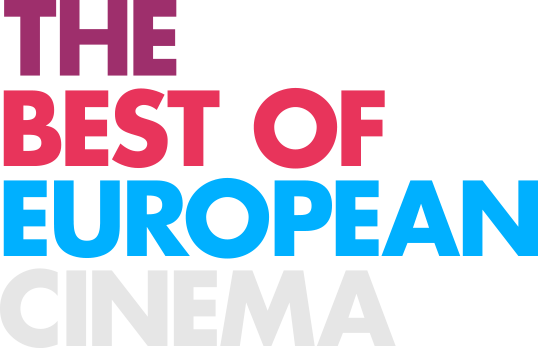Interview: Priit Pärn - the legend of Estonian animation
Legendary Estonian animator Priit Pärn held a masterclass at the 8th edition of Fest Anča, which took part in Žilina between 24 and 28 June. The festival also featured most of the short and medium-length films the Estonian artist has directed over the past 40 years. Cineuropa had the chance to talk to this legend of animation.
Cineuropa Shorts: You chose to start your masterclass from the concept of line. Why line and not another one like colour or storytelling?
Priit Pärn: I’ve normally made my workshops on storytelling, trying to work with ideas to build up storylines, but two years ago I realised it all relates to the subject of line. Why not colour? In drawing animation, colour mainly comes after line. I’ve had long lectures about what line is, how it can be, what its meaning is – The line is something really interesting. We are able to perceive reality without lines – we can see three buses, a cow standing there, but no lines. Our brains can turn those images into lines. It’s what the small kids do first – They first draw and then they colour and later they shape and create abstract images different from real images.
A big part of my films – from 1980 to 1998 – were made with my friend, the very good painter Miljard Kilk. I used to make the character design with lines while he was responsible for colour. Step by step, I learned from him and now I can colour my films by myself and I can give advice on the matter to my students. But it took time because I’m not a painter; I’m a graphic artist.
You started doing animation quite late in your life. How did you end up in this job?
I used to draw caricatures (again, line drawing). Caricatures could be described as film in one frame. I did also some press stories. In those you can see what has happened and tell what is happening afterwards. It’s a way of thinking. I have worked for newspapers and magazines and I have illustrated books so I got a name in Estonia. One day, I was asked to prepare the character design of two animated films directed by somebody else. I began to have some contacts with studios and after some time and just a couple of weeks after I decided to quit biology, I received some calls to join a studio. I said yes. It was like an accident! At the beginning, when I was working on my first or second films, I had the backdoor feeling that if that gave me any problems I could come back to biology. But actually, to be honest with myself, I was pretty sure that I was not coming back – if it hadn’t been animation, it would have been graphic art.
Why haven’t you ever made a feature animation film yet?
There are like two different professions. If you take live action films, short formats are steps to make feature-length fiction. In animation, it doesn’t work like that. 99% of animated films are made following the rules of live action films. The times in live action features and animated shorts is different than that of animated features. One second of animated film equals five seconds of live action shooting. There are different reasons for that. Short animation spectators subconsciously try to solve the meaning of what they are watching. Even watching primitive stuff like Tom and Jerry you don’t think about cat and mouse, big and small, clever and stupid or other categorical differences. Live action tries to create the illusion of reality. You don’t need to solve the meaning of the images. Live action Filmmakers want to create the illusion of reality and their audiences want to believe it.
On the other hand, feature-length animation is very expensive. You need a lot of different resources of money that later needs to come back. To achieve that, you have to make either a children film or a movie for all the family. You need to follow those standards and make films just slightly differently than the ones that very probably have already been made previously. I prefer to have freedom and, after some time, I have managed to have no restrictions regarding the films I make. How good is the film is just up to me and my team, regardless of what other people think or whether they think you’re not allowed to do this or that.
You have directed some films and co-directed others with other people. Now you work together with your wife Olga Pärn.
I’ve made my last four films with Olga. Life Without Gabriella Ferrita is made in the same language as short-length animation. Time is compressed. I worked on the script for ten months. It would be impossible to make a live action feature out of Pilots on the Way Home but you could make it out of Gabriela. The only thing is that it would be 2 hours long.
I also co-directed Time Out with photographer Janno Poldma in 1985, which I find honest to say because it was the year when I started the school in Finland so I travelled a lot and Janno kept the system running, so to speak. But working with Olga is different because we form a good team. She’s very good with computers and I write, draw and design. One thing is to design and another thing is to build up a visual world. We both have a background as graphic artists so we tried to find some aesthetics similar to what we created as graphic artists. That would have been impossible to achieve as a team without computers. The issue now is money. You can work endlessly until you feel the moment to say “it’s done” has arrived. On Gabriela we drew more than 700 backgrounds. We sometimes wondered how the production of Gabriela would have been done in a studio because we two did the job of around ten people – we had to take charge of specific tasks for which studios normally have somebody specialised in doing those: layouts, storyboards, and so on.
Pilots on the Way Home, in its turn, is sand animation and Olga is very good at it so she took charge of it. We created some special technique to separate layers by drawing on a very fine layer of sand and then turn it in negative. Olga would do a second layer and work on the two of them together in the computer. It’s a little bit like drypoint and aquatint. One frame would take a few days. It took one year and five months to complete the animation of Pilots. We also have a small child so a lot of work would be made at night, while he was sleeping. We had this big table in our studio and we had to keep him away from it – he would come and shake it, ruining five hours of work on a single scene. It was a hard job.
Are you working on something new yet?
I’m working on a small two-minutes video project and Olga is wrapping up the illustrations for one book. I have to finish some illustrations myself as well and I usually have long breaks between my films. I always have the impression that this is my last film. Then ideas slowly start to flow again until I have the feeling that I need to make another one. But I never feel I must do something new.
22 July 2015, by Gonzalo Suárez






